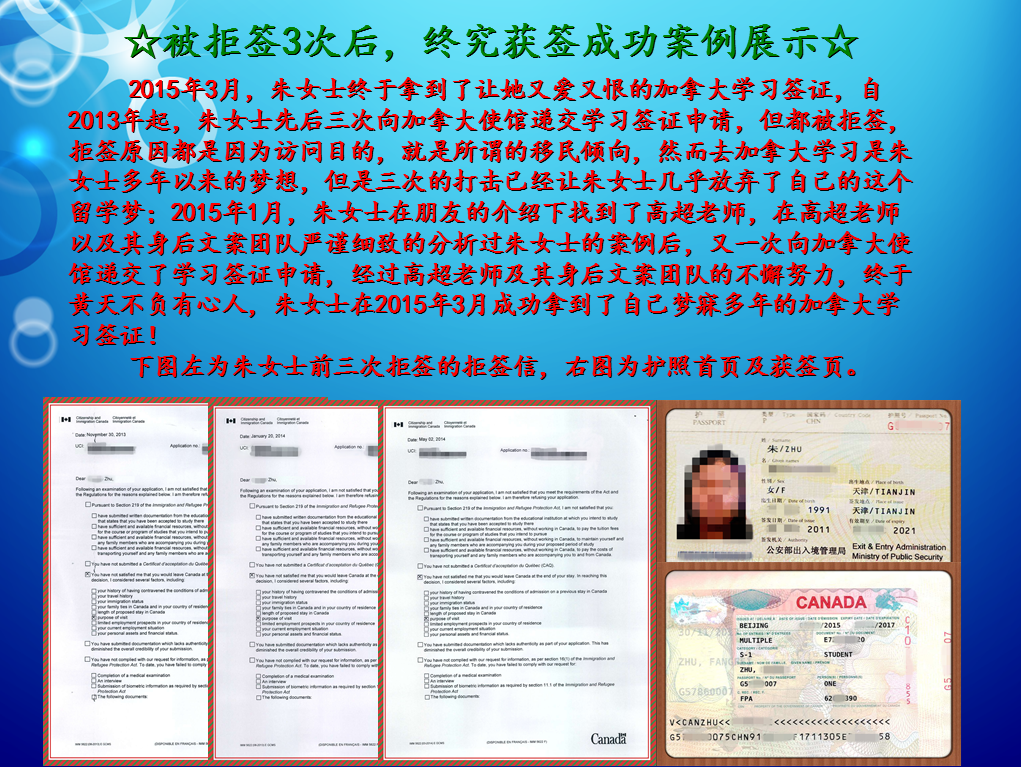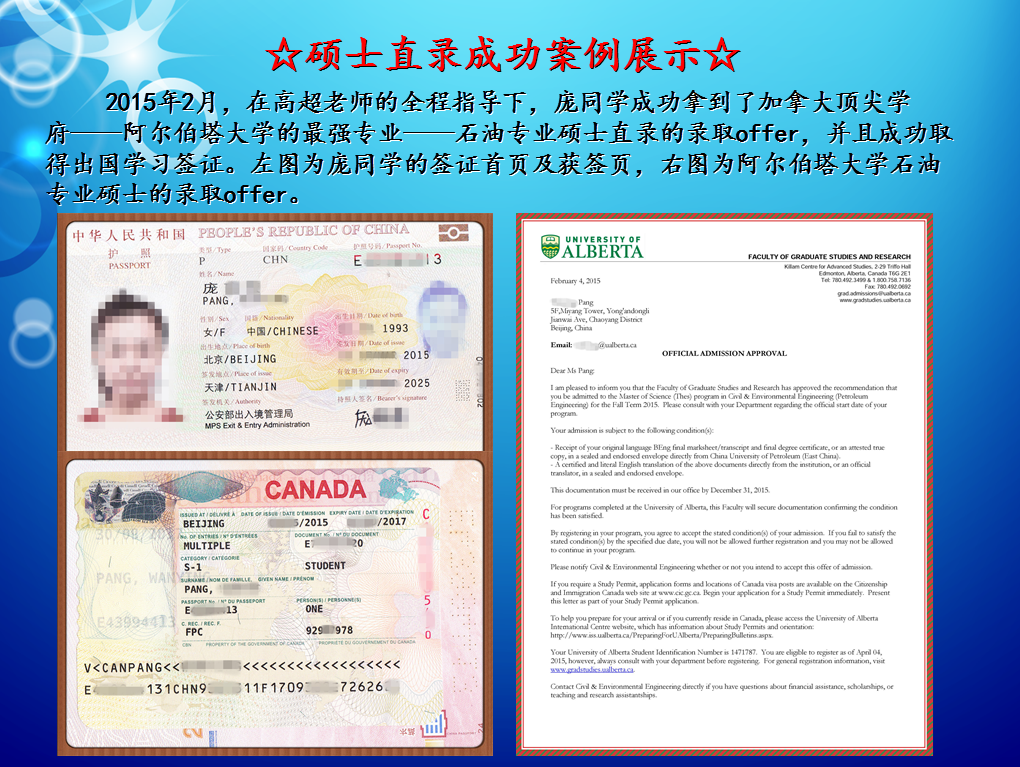2017年4月6日雅思阅读机经.
2017-08-06 337阅读
下面是2013年4月6日雅思阅读机经的内容,包括了这次考试涉及到的有收音机的历史和制作介绍,厄尔尼诺现象以无家可归的年轻人等三篇文章。为了更好的备考雅思阅读考试,我们一起来看看这三篇雅思阅读考题的内容吧。
| 考试日期: | 2013年4月6日 |
| Reading Passage 1 | |
| Title: | Radio |
| Question types: | Sentence completion填空; Multiple choice单选题 |
| 文章内容回顾 | 讲收音机的制作历史以及制作步骤和流程 |
| 英文原文阅读 | Radio is the wireless transmission of signals through free space by electromagnetic radiation of a frequency significantly below that of visible light, in the radio frequency range, from about 30 kHz to 300 GHz. These waves are called radio waves. Electromagnetic radiation travels by means of oscillating electromagnetic fields that pass through the air and the vacuum of space. Information, such as sound, is carried by systematically changing (modulating ) some property of the radiated waves, such as their amplitude, frequency, phase, or pulse width. When radio waves strike an electrical conductor, the oscillating fields induce an alternating current in the conductor. The information in the waves can be extracted and transformed back into its original form. The etymology of "radio" or "radiotelegraphy" reveals that it was called "wireless telegraphy," which was shortened to "wireless" in Britain. The prix radio- in the sense of wireless transmission, was first recorded in the word radioconductor, a description provided by the French physicist �douard Branly in 1897. It is based on the verb to radiate (in Latin "radius" means "spoke of a wheel, beam of light, ray"). The word "radio" also appears in a 1907 article by Lee De Forest . It was adopted by the United States Navy in 1912, to distinguish radio from several other wireless communication technologies, such as the photophone. The term became common by the time of the first commercial broadcasts in the United States in the 1920s. (The noun "broadcasting" itself came from an agricultural term, meaning "scattering seeds widely.") The term was adopted by other languages in Europe and Asia. British Commonwealth countries continued to commonly use the term "wireless" until the mid-20th century, though the magazine of the BBC in the UK has been called Radio Times ever since it was first published in the early 1920s. In recent years the more general term "wireless" has gained renewed popularity through the rapid growth of short-range computer networking, e.g., Wireless Local Area Network (WLAN), Wi-Fi, and Bluetooth, as well as mobile telephony, e.g., GSM and UMTS. Today, the term "radio" specifies the actual type of transceiver device or chip, whereas "wireless" rers to the lack of physical connections; one talks about radio transceivers, but about wireless devices and wireless sensor networks. |
| 题型难度分析 | 根据考生回忆第一篇阅读非常简单,是机经中的一篇。 |
| 题型技巧分析 | 本篇有填空题,填空题的做题步骤: 1. 读题目要求,主要看字数要求,一般不超过三个或两个,一定要看清楚 2. 读题目,并划出关键词,关键词首先是特殊的比如人名地名时间数字等,如果没有这些词,那就划出名词 3. 对所填的空进行预测,预测所填空的词性,单复数情况 4. 根据划出的关键词去文中定位 5. 对定位部分进行分析,选出答案 选择题的做题步骤 1. 阅读指令 (Instruction) 这一步骤主要是针对多项选择而言的,单项选择题的指令几乎没有作用。在多项选择题中,指令中会提示正确选项的数量,在誊写答题卡的时候,一定要注意多项选择题的题号,一个正确选项占用一个题号。这一点对于初次接触雅思的考生来说要特别引起注意。 2. 阅读题干,划出定位词 由于选择题考察细节的特点,故题干中的词往往能够提供定位 3. 阅读选项,划出核心词 在寻找正确答案之前,一定要事先通读选项,因为选项提供了对原文正确或者是错误的同义转换。但是由于选项较长,不可能一次性全部记住,所以有必要把选项里的核心词划出来,这样可以减轻记忆负担,并且更加有针对性地做题。 4. 找到相关句子段落,摆脱干扰找到答案 这是做题的最后一个步骤,也是最重要的步骤。由于选择项的干扰性往往很强,所以对找到的相关句子或段落一定要进行仔细阅读,排除错误选项。甄别干扰项这一步骤是考生解题的关键,很多考生往往对几个选项犹豫不决,经常跳进题目的陷阱。一般说来,干扰项有如下几个类别: 1) 数字陷阱 选择题的特点便是选项进行深度的同义转换。但是如果个别选项中出现了数字,往往意味着这个数字直接来源于文章,没有进行任何同义替换。这种干扰选项对于根本读不懂原文的考生有着致命的诱惑力,因为只有数字是熟悉的,其它的单词都读不懂。数字选项中,数字在文章中都有提及,但经常是通过移花接木的形式出现的,以干扰考生的注意力。 2) 相似陷阱 同理,如果题目中出现的个别单词与原文中的用词一模一样,尤其是一些经常被同义替换掉的动词、形容词等,这个选项往往就是干扰选项。 3) 偷换概念陷阱 有时候选项中虽然与文中有对应的词,但选项中偷换了关键性的成分(如谓语部分),使得答案错误。 4) 搭配不当陷阱 这是最具有诱惑性的选项。这种选项的特点是:选项本身是正确的,但是跟题干却不能形成搭配关系。很多考生看到选项和原文内容相似,甚至还有同义转换,便毫不犹豫地选择了这样的干扰项。 |
| 剑桥雅思推荐原文练习 | 剑4 Test 1 Passage 1 剑5 Test 3 Passage 1 |
| Reading Passage 2 | |
| Title: | 厄尔尼诺 |
| Question types: | Multiple choice; TRUE /FALSE /NOT GIVEN |
| 文章内容回顾 | 环境类的,通过对seabirds的研究来观察海洋生物和厄尔尼诺现象。 |
| 英文原文阅读 | El Nino, an abnormal warming of surface ocean waters in the eastern tropical Pacific, is one part of what&aposs called the Southern Oscillation. The Southern Oscillation is the see-saw pattern of reversing surface air pressure between the eastern and western tropical Pacific; when the surface pressure is high in the eastern tropical Pacific it is low in the western tropical Pacific, and vice-versa. Because the ocean warming and pressure reversals are, for the most part, simultaneous, scientists call this phenomenon the El Nino/Southern Oscillation or ENSO for short. South American fishermen have given this phenomenon the name El Nino, which is Spanish for "The Christ Child," because it comes about the time of the celebration of the birth of the Christ Child-Christmas. To really understand the fects of an El Nino event, compare the normal conditions of the Pacific region and then see what happens during El Nino below. Scientists do not really understand how El Nino forms. It is believed that El Nino may have contributed to the 1993 Mississippi and 1995 California floods, drought conditions in South America, Africa and Australia. It is also believed that El Nino contributed to the lack of serious storms such as hurricanes in the North Atlantic which spared states like Florida from serious storm related damage. Unfortunately not all El Nino&aposs are the same nor does the atmosphere always react in the same way from one El Nino to another. This is why NASA&aposs Earth scientists continue to take part in international forts to understand El Nino events. Hopully one day scientists will be able to provide sufficient warning so that we can be better prepared to deal with the damages and changes that El Nino causes in the weather. |
| 题型难度分析 | 根据考生回忆,本篇也是机经中的一篇文章,比较简单,去年就考过,但后面的题目在考试中变了。 |
| 题型技巧分析 | 是非无判断题是雅思阅读考试的经典题型,虽然今年的题量相对减少,但是仍是复习备考时应关注的题型。 首先应该注意看清是TRUE还是YES, 本篇是TRUE /FALSE /NOT GIVEN 解题步骤: 1. 速读问题的句子,找出考点词(容易有问题的部分)。考点词:比较级,最高级,数据(时间),程度副词,特殊形容词,绝对化的词(only, most, each, any, every, the same as等) 2. 排除考点词,在余下的词中找定位词,去原文定位。 3. 重点考察考点词是否有提及,是否正确。 TRUE的原则是同义替换,至少有一组近义词。 FALSE是题目和原文截然相反,不可共存,通常有至少一组反义词。 NOT GIVEN是原文未提及,不做任何推断,尤其多考察题目的主语等名词在原文是否有提及。 |
| 剑桥雅思推荐原文练习 | 剑3 Test 4 Passage 1 |
| Reading Passage 3 | |
| Title: | 无家可归的青年 |
| Question types: | Pick from a list; summary with a box; YES /NO /NOT GIVEN |
| 文章内容回顾 | 这篇主要讲流浪青少年的问题,关注街头儿童,和剑桥4 Test 3 Passage 1文章话题相似。 |
| 英文原文阅读 | DEFINITIONS AND DIMENSIONS Homeless youth are individuals under the age of eighteen who lack parental, foster, or institutional care. These young people are sometimes rerred to as "unaccompanied" youth. The number of the homeless youth is estimated by the Office of Juvenile Justice and Delinquency Prevention in the US Department of Justice. Their most recent study, published in 2002, reported there are an estimated 1,682,900 homeless and runaway youth. This number is equally divided among males and females, and the majority of them are between the ages of 15 and 17 (Molino, 2007).� According to the U.S. Conference of Mayors, unaccompanied youth account for 1% of the urban homeless population, (U.S. Conference of Mayors, 2007). According to the National Network of Runaway and Youth Services, six percent of homeless youth are gay, lesbian, bisexual, or transgender (GLBT) (Molino, 2007).� The number of homeless teenagers who are pregnant is estimated to be somewhere between six and twenty-two percent. (Health Resources and Services Administration 2001) According to the National Alliance to End Homelessness, five to seven percent of American youths become homeless in any given year. (NAEH, 2007) CAUSES Causes of homelessness among youth fall into three inter-related categories: family problems, economic problems, and residential instability. Many homeless youth leave home after years of physical and sexual abuse, strained relationships, addiction of a family member, and parental neglect. Disruptive family conditions are the principal reason that young people leave home: in one study, more than half of the youth interviewed during shelter stays reported that their parents either told them to leave or knew they were leaving and did not care (U.S. Department of Health and Human Services (a), 1995). In another study, 46% of runaway and homeless youth had been physically abused and 17% were forced into unwanted sexual activity by a family or household member (U.S. Department of Health and Human Services (c), 1997). Some youth may become homeless when their families suffer financial crises resulting from lack of affordable housing, limited employment opportunities, insufficient wages, no medical insurance, or inadequate welfare benits. These youth become homeless with their families, but are later separated from them by shelter, transitional housing, or child welfare policies (Shinn and Weitzman, 1996). Residential instability also contributes to homelessness among youth. A history of foster care correlates with becoming homeless at an earlier age and remaining homeless for a longer period of time (Roman and Wolfe, 1995). Some youth living in residential or institutional placements become homeless upon discharge -- they are too old for foster care but are discharged with no housing or income support (Robertson, 1996). One national study reported that more than one in five youth who arrived at shelters came directly from foster care, and that more than one in four had been in foster care in the previous year (National Association of Social Workers, 1992). CONSEQUENCES Homeless youth face many challenges on the streets. Few homeless youth are housed in emergency shelters as a result of lack of shelter beds for youth, shelter admission policies, and a prerence for greater autonomy (Robertson, 1996). Because of their age, homeless youth have few legal means by which they can earn enough money to meet basic needs. Many homeless adolescents find that exchanging sex for food, clothing, and shelter is their only chance of survival on the streets. In turn, homeless youth are at a greater risk of contracting AIDS or HIV-related illnesses. Estimates for percentages of homeless youth infected with HIV are generally around 5%, but one study in San Francisco found that 17% of homeless youths were infected (Health Resources and Services Administration 2001). It has been suggested that the rate of HIV prevalence for homeless youth may be as much as 2 to 10 times higher than the rates reported for other samples of adolescents in the United States (National Network for Youth, 1998). Homeless adolescents often suffer from severe anxiety and depression, poor health and nutrition, and low self-esteem. In one study, the rates of major depression, conduct disorder, and post-traumatic stress syndrome were found to be 3 times as high among runaway youth as among youth who have not run away (Robertson, 1989). Furthermore, homeless youth face difficulties attending school because of legal guardianship requirements, residency requirements, improper records, and lack of transportation. As a result, homeless youth face severe challenges in obtaining an education and supporting themselves emotionally and financially. PROGRAM AND POLICY ISSUES Homeless youth benit from programs that meet immediate needs first and then help them address other aspects of their lives. Programs that minimize institutional demands and offer a range of services have had success in helping homeless youth regain stability (Robertson, 1996). Educational outreach programs, assistance in locating job training and employment, transitional living programs, and health care especially designed for and directed at homeless youth are also needed. In the long term, homeless youth would benit from many of the same measures that are needed to fight poverty and homelessness in the adult population, including the provision of affordable housing and employment that pays a living wage. In addition to these basic supports, the child welfare system must make every fort to prevent children from ending up on the streets. |
| 题型难度分析 | 生词较少,相对简单 |
| 题型技巧分析 | Summary题,有顺序原则。 先关注instruction字数限制,有些题目在字数限制前,还有段落限制,告诉考生这个题目是针对哪个段落的。 其次,通读summary, 并且划出关键词,主要包括名词,连接词,介词,不定冠词。 然后根据空格前后的信息,预测空格上的单词(单复数,可数与否,词性,-ing, -ed, 固定搭配等) 如果是有选项的摘要题,还要通读选项。 同时注意无选项的文章摘要题,在写答案的时候,单词一定要来自于文章中。 多选题一般答案具有集中性的特点,会在一到三段内出答案。 |
| 剑桥雅思推荐原文练习 | 剑4 Test 3 Passage 1 |
以上就是关于2013年4月6日雅思阅读机经的全部内容,包括了对这次考试的三篇文章的题目,问题类型和大致内容做的一个整理和分析。大家可以在备考雅思阅读考试的过程中根据自己的实际情况选择一些话题进行背景知识的准备。
留学咨询
更多出国留学最新动态,敬请关注澳际教育手机端网站,并可拨打咨询热线:400-601-0022
留学热搜
相关推荐
- 专家推荐
- 成功案例
- 博文推荐

Copyright 2000 - 2020 北京澳际教育咨询有限公司
www.aoji.cn All Rights Reserved | 京ICP证050284号
总部地址:北京市东城区 灯市口大街33号 国中商业大厦2-3层









高国强 向我咨询
行业年龄 12年
成功案例 3204人
留学关乎到一个家庭的期望以及一个学生的未来,作为一名留学规划导师,我一直坚信最基本且最重要的品质是认真负责的态度。基于对学生和家长认真负责的原则,结合丰富的申请经验,更有效地帮助学生清晰未来发展方向,顺利进入理想院校。
Amy GUO 向我咨询
行业年龄 17年
成功案例 4539人
一切的一切从现在开始.用自己的态度闯出一片天
薛占秋 向我咨询
行业年龄 11年
成功案例 1869人
从业3年来成功协助数百同学拿到英、美、加、澳等各国学习签证,递签成功率90%以上,大大超过同业平均水平。
Tara 向我咨询
行业年龄 7年
成功案例 1869人